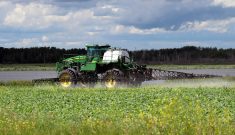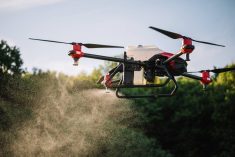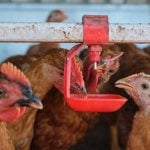As Tom Wolf of Agrimetrix Research and Training points out, when the wind picks up or, perhaps, changes direction, this can throw a wrench into a spraying operation.
This may mean returning to the field when conditions are more favourable for spraying, or perhaps switching to another product that is not as risky for the day. If it’s the latter, Wolf says it can really help if farmers have a to-do list for spraying, which they can use to select a field treatment that causes the least harm. Such a to-do list is one example of how important planning and preparation are to a successful spray program, he adds.
“We found the overall big trends in spraying are that farmers have less time to do more acres because they’re spraying more often than they ever have,” he says. “My average client in some years they’ll spray every acre four or even five times, so the sprayer runs almost every week throughout the entire growing season. It’s the most used piece of farm equipment on the farm.
Read Also

Claas brings 1000 Series SP forage harvesters to Canada
In mid-August, Claas unveiled its new line of Jaguar forage harvesters at an event in Visalia, California, deep in the heart of that state’s dairy region.
“What that means for a lot of farmers is being ready, and not just having the product on hand, but also having a very efficient tendering system where you waste as little time as possible with filling, for example, or hauling water,” Wolf adds.
“You have to be capable of doing a lot of acres in a short time to meet that window, or you might have to fight some adverse weather that occurs right in the middle of that window.”
Wolf says these days when talking to his clients it’s “less and less about nozzles and more and more about logistics.
“We talk about filling fast, minimizing downtime, cleaning more efficiently — just considering all of the ways in which you spend your time so you can spend most of it actually spraying,” he says. “You might have to have alternatives available, such as aerial application, should the weather make ground application impossible. Those are all things to consider.”
Wolf says rather than investing in a new sprayer, more clients are choosing to purchase something like a new tender truck that can speed things up. “That gives them lots of acres per hour, and so it’s money well spent.”
Other ways farmers can improve the productivity of their spray program is through continuous rinsing, a fast and effective method for delivering clean water to the booms, and the use of stainless steel tanks since they’re easier to clean. Something else to consider is using recirculating booms, which don’t take as long to prime, are faster to clean and produce less waste.















